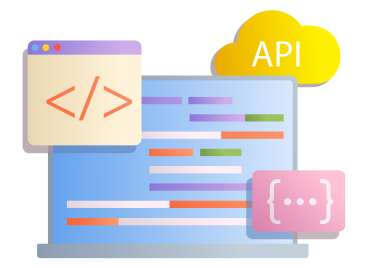
Scale faster with quality tech expertise
What is microservices architecture?
Microservices architecture is a type of software development build where instead of having one big application with functionality that is deeply interconnected, you have a number of smaller, autonomous “services” that are independent.
These independent services can be updated, upgraded, or even removed without crashing the entire application.
Main characteristics of microservices architecture
There is, of course, variety in how microservices are developed, but all of them share the following characteristics:
- Modularity. Each service is focused on its own business purpose and provides targeted functionality.
- Independence in development and maintenance. You don’t have to update the entire app just because one element needs a fix.
- Scalability that supports exponential growth without needing too many resources.
- Decentralised data management where each service has its own database.
- Fail-tolerance that is achieved through each service’s independence. Should one element fail, others continue working as normal.
- Technological flexibility. Because modules are independent, they can be built using different frameworks and programming languages, allowing seemingly incompatible technology to co-exist.
- API-based communication between the services that enables services to communicate but maintain their independence.
Key benefits of microservices architecture for startups
The way microservices architecture works creates many benefits for startups, including:
- Faster development cycles
- Cheaper development process
- Easy to maintain and upgrade
- Advanced data security
- Resilient and fault-tolerant performance
Overall, using microservices architecture allows startups to keep their teams small and maximise the return on investment. New features can be developed and rolled out to market faster, and thanks to the independent nature of microservices, it’s far easier to run proof of concepts and gather and implement customer feedback.

Additionally, you get a solution that will stay online even if one or several of its elements fail. This means that reputation and client loss risks are lower which is perfect for startups that are only beginning to build their brands and cannot afford bad press or downtime.
Microservices architecture seems to be the ultimate win-win for startups. You get a solution that is faster and cheaper to make without compromising security or performance, andit's easily scalable, so you won’t be punished for your success by having to urgently redesign the entire infrastructure.
Best practices for microservices architecture for startups
Here are some of the best practices the Emphasoft team developed over the years while working with clients:
- Make sure the microservices architecture makes sense and fits your requirements. Too often we see companies adopt various tools, platforms, and strategies simply because they are trendy. In the long term, you’ll benefit much more from a solution that is right for you, not the one that’s this week’s hot topic.
- Unless you’re starting completely from scratch, you’ll likely need to move away from the monolithic approach. The transition can be tricky and tedious, so you’re likely to face at least some opposition from the team or stakeholders. Make sure you dedicate enough time and patience to get everyone on board. The last thing you need is to have someone jeopardise the entire migration because they’re not happy you’re doing it.
- As you start expanding the team, look at building sub-teams around all modules within the microservice. It might be impossible at first, especially if you have many features and limited human resources, but prepare the groundwork so that once you’re in a position to expand, every module will get its own team. Just like the services are independent, you need to have an independent support group for them.
- Don’t ignore the security even at the early stages. Microservices are safe but they’re still subject to hacker vulnerability. Don’t make the mistake of assuming that since they’re all independent, it won’t be a big deal.
- As you deploy new modules, do it gradually instead of rolling them out all at once. This will help you manage any last-minute bug fixes and other potential issues without worrying about five things at once.
There are many more recommendations and tips we can share, so if you’re a startup that’s considering microservices architecture or if you’re already in the midst of it, please feel free to reach out to the Emphasoft team, and we’ll be happy to guide you.








 Schedule a Discovery Call
Schedule a Discovery Call Schedule Call
Schedule Call